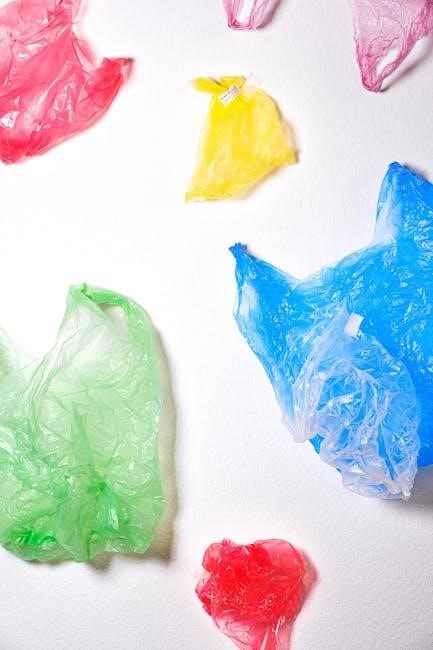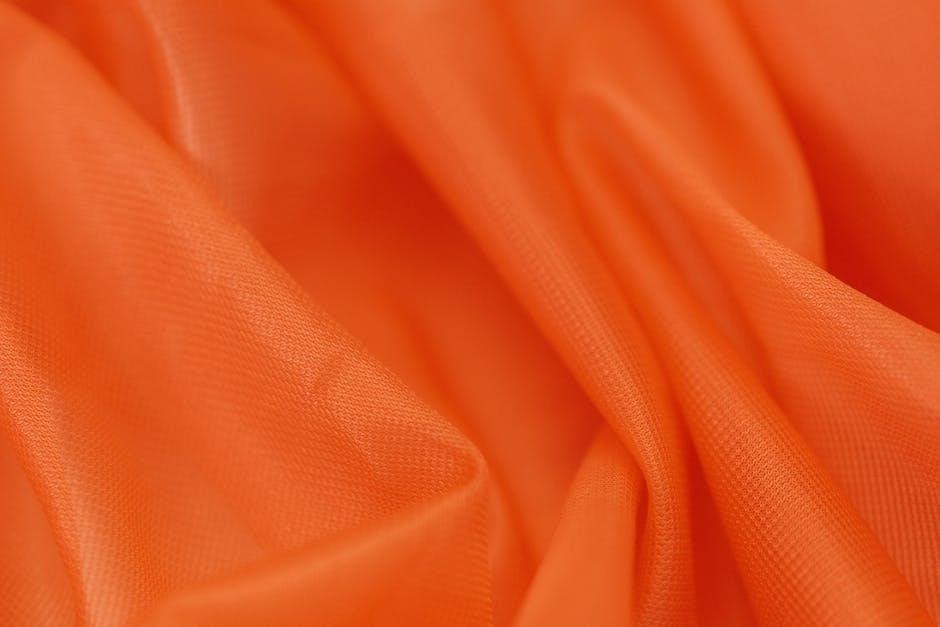Introducing UPass Synthetic Pee, a reliable solution for urine testing. It comes pre-mixed with heating pads and a temperature strip, ensuring a natural 94-100°F range.
Overview of UPass Synthetic Pee
UPass Synthetic Pee is a high-quality, pre-mixed synthetic urine kit designed to mimic real human urine for testing purposes. It is popular for its convenience and realistic properties, making it a reliable choice for various scenarios. The kit typically includes synthetic urine, heating pads, and a temperature strip to ensure accuracy. The formula is tailored to match the chemical and physical characteristics of natural urine, including pH levels and specific gravity. This product is widely used for drug testing, educational purposes, or other situations where artificial urine is required. Its ease of use and realistic temperature range (94-100°F) make it a preferred option for individuals seeking a discreet and effective solution.
Key Characteristics of UPass Synthetic Pee
UPass Synthetic Pee is renowned for its realistic properties, making it nearly indistinguishable from human urine. It is pre-mixed for convenience and includes essential components like heating pads and a temperature strip. The synthetic urine is formulated to match human urine’s pH levels, specific gravity, and chemical composition, ensuring accuracy in test results. Its temperature range of 94-100°F further enhances its authenticity. The kit is user-friendly, with clear instructions for heating and testing. These characteristics make it a trusted option for individuals needing artificial urine for drug testing, educational purposes, or other scenarios requiring a reliable and discreet solution.
Why Use Synthetic Urine for Testing?
Synthetic urine offers a convenient and reliable alternative for various testing scenarios. It eliminates the need for human samples, ensuring consistency and accuracy in results. Many individuals use synthetic urine for drug testing, as it provides a discreet and stress-free option. The pre-mixed formula and included heating pads make it easy to achieve the natural temperature range of 94-100°F, mimicking real urine. This makes it ideal for situations where human error or sample integrity is a concern. Additionally, synthetic urine is widely used for educational purposes, product testing, or medical training, offering a realistic and ethical solution without the need for biological samples.

Preparation Steps for UPass Synthetic Pee
Begin by unboxing and setting up the UPass kit. Familiarize yourself with the components, including the synthetic urine, heating pads, and temperature strip. Always read the user guide for detailed instructions before proceeding with heating or testing.
Unboxing and Initial Setup
Start by carefully opening the UPass Synthetic Pee box. Inside, you’ll find the pre-mixed synthetic urine bottle, heating pads, a temperature strip, and a dispensing cap. Ensure all components are included. Before proceeding, read the user guide thoroughly to understand the setup process. Familiarize yourself with the synthetic urine bottle and the temperature strip, which is crucial for accurate heating. If any items are missing or damaged, contact the manufacturer immediately. Once unboxed, place the components on a clean, flat surface for easy access. This initial setup ensures a smooth process for heating and testing.
Understanding the Components
The UPass Synthetic Pee kit includes several essential components designed for accurate and convenient use. The pre-mixed synthetic urine bottle mimics natural urine characteristics, ensuring realistic test results. The heating pads are used to warm the sample to the desired temperature. A temperature strip is provided to monitor the heat level, ensuring it stays within the required range of 94-100°F. Additionally, a dispensing cap is included for easy pouring into a sterile container. Each component plays a specific role in the testing process, and understanding their functions is key to achieving accurate results. Proper handling and use of these items are crucial for successful testing.
Reading the User Guide
Before using UPass Synthetic Pee, it’s essential to thoroughly read the user guide provided. The guide outlines step-by-step instructions for heating, testing, and applying the synthetic urine. It includes safety precautions, such as avoiding overheating, which can damage the sample or the heating pads. The guide also explains how to interpret the temperature strip, ensuring the urine is within the required range of 94-100°F. Additionally, it covers troubleshooting tips, such as what to do if the temperature is too low or if the test strip doesn’t change color. Following the guide carefully ensures accurate results and proper use of the product. Always refer to the guide for specific instructions tailored to the UPass Synthetic Pee kit.

Heating the Synthetic Urine
Heat the synthetic urine using a microwave or heating pads. Microwave for 10 seconds, then check the temperature strip to ensure it reads between 94-100°F.
Microwave Heating Instructions
To heat UPass Synthetic Pee using a microwave, start by placing the bottle in the microwave for 10 seconds. Carefully remove it and check the temperature strip. If the temperature is below 94°F, reheat in 5-second intervals until it reaches the desired range of 94-100°F. Avoid overheating, as this can degrade the sample. Once the correct temperature is achieved, the synthetic urine is ready for use. Always follow the manufacturer’s guidelines to ensure accuracy and reliability in your test results.
Using Heating Pads for Warming

For an alternative to microwaving, heating pads can be used to warm UPass Synthetic Pee. Attach the heating pad to the bottle and secure it with tape. Let it warm for about 30-45 minutes, or until the temperature strip indicates the sample has reached 94-100°F. Check the temperature periodically to avoid overheating. Once warmed, the synthetic urine is ready for use. This method is ideal for those without microwave access and ensures a steady, natural temperature. Always follow the manufacturer’s instructions for best results and to maintain the sample’s integrity during testing.
Monitoring Temperature with the Strip
The temperature strip is a crucial component for ensuring the UPass Synthetic Pee is at the correct temperature. Attach the strip to the bottle or sample container and observe the color change. The strip will indicate when the sample reaches the ideal range of 94-100°F. Check the strip regularly, especially after heating, to ensure the temperature remains within the desired range. If the temperature is too low, reheat the sample using the microwave or heating pad. If it’s too high, allow it to cool slightly. Monitoring the temperature strip ensures the sample’s authenticity and reliability for testing purposes. This quick and effective method guarantees accurate results every time.

Testing the Temperature
Verify the temperature of UPass Synthetic Pee using the provided strip. Ensure it reads between 94-100°F for accuracy. This step is crucial for reliable test results.
Ideal Temperature Range (94-100°F)
The UPass Synthetic Pee must be heated to a temperature range of 94-100°F for accurate test results. This range mimics real human urine, ensuring authenticity. Use the temperature strip to verify the sample. If the temperature is too low, the test may fail or raise suspicion. Conversely, overheating can also lead to unreliable results. To achieve the ideal range, heat the sample in short intervals using a microwave or heating pad. Always check the strip after heating to ensure compliance. Proper temperature ensures the synthetic urine behaves like natural urine during testing. This step is crucial for successful use.
How to Check the Temperature Strip
To ensure the UPass Synthetic Pee is within the correct temperature range, attach the temperature strip to the bottle. After heating, wait a few seconds for the strip to display an accurate reading. The strip will change color to indicate the temperature. If the strip shows a temperature between 94-100°F, the sample is ready for use. If the temperature is too low or high, adjust the heating method accordingly. Always double-check the strip before applying the sample to avoid test failures. This step ensures the synthetic urine mimics natural urine conditions, increasing the chances of a successful test outcome. Proper temperature verification is essential for authenticity.
Reheating if Necessary
If the temperature of the UPass Synthetic Pee is below 94°F after initial heating, reheat it in short intervals. Place the bottle in the microwave for 5-10 seconds, then check the temperature strip. Repeat this process until the temperature falls within the 94-100°F range. Be cautious not to overheat, as temperatures exceeding 100°F can damage the sample. Once the desired temperature is achieved, the synthetic urine is ready for use. Reheating ensures the sample remains within the acceptable range for accurate test results. Always monitor the temperature closely to avoid overheating, which could compromise the sample’s integrity. Proper reheating is essential for a successful testing experience.

Applying the Synthetic Urine
Pour the synthetic urine into a sterile container. Dip the test strip into the sample for 12 seconds, ensuring proper contact time for accurate results.
Pouring the Sample into a Sterile Container
Begin by carefully pouring the synthetic urine from the bottle into a clean, sterile container. Ensure the container is free from contaminants to maintain the integrity of the sample. Hold the bottle at a slight angle to prevent spills and pour steadily. Once the sample is transferred, secure the container tightly to avoid leakage. This step is crucial for ensuring the sample remains undamaged and ready for testing. Always use a new, sterile container for each test to prevent cross-contamination and achieve accurate results. Proper handling ensures the synthetic urine performs as intended during the testing process.
Dipping the Test Strip
Once the synthetic urine is prepared, carefully dip the test strip into the sample. Ensure the strip is fully submerged in the liquid, following the manufacturer’s instructions for the recommended time, typically around 12 seconds. Avoid touching the test area with your fingers to prevent contamination. After dipping, remove the strip and place it on a clean, flat surface. Wait for the results to appear, usually within a few minutes. The test strip will display color changes indicating the presence or absence of specific substances. Proper handling ensures accurate and reliable results. Always refer to the user guide for specific timing and handling procedures to achieve the best outcomes.
Ensuring Proper Contact Time
Proper contact time is crucial for accurate test results. After dipping the test strip into the synthetic urine, ensure it remains submerged for the recommended duration, typically 12 seconds. Avoid touching the test area with your fingers to prevent contamination. Once removed, place the strip on a clean, flat surface and allow it to develop without shaking or wiping. The results will appear within a few minutes. Proper contact time ensures the chemicals on the strip react accurately with the sample. Follow the user guide for specific timing instructions, as incorrect exposure can lead to false results. This step is vital for reliable and consistent outcomes. Always adhere to the manufacturer’s guidelines.

Maintenance and Storage
Store UPass Synthetic Pee in a cool, dry place before use. Clean equipment thoroughly after each use to maintain hygiene and effectiveness. Proper storage ensures longevity.
Storing the Synthetic Urine Before Use
Store UPass Synthetic Pee in a cool, dry place away from direct sunlight and moisture. Keep the bottle sealed tightly in its original packaging to maintain freshness. Avoid extreme temperatures and refrigeration, as this can alter the composition. Ensure the product is stored upright to prevent leakage. The shelf life of UPass Synthetic Pee is up to 12 months when stored properly. Always check the expiration date before use and ensure the temperature strip is intact. Proper storage ensures the synthetic urine remains effective and ready for use when needed. Follow these guidelines to maintain the product’s quality and reliability.
Cleaning the Equipment
After using UPass Synthetic Pee, clean all equipment thoroughly to prevent contamination and maintain hygiene. Wash the sterile container, dispensing cap, and any utensils with mild soap and warm water. Rinse meticulously to remove any residue. Sanitize the equipment using isopropyl alcohol (70-90% concentration) by wiping down all surfaces. Allow the equipment to air-dry completely to avoid water spots or bacterial growth. Do not use harsh chemicals or abrasive cleaners, as they may damage the materials. Store the cleaned equipment in a cool, dry place, ready for future use. Proper cleaning ensures the longevity and effectiveness of the kit components.
Shelf Life of UPass Synthetic Pee

The UPass Synthetic Pee kit typically has a shelf life of up to 2 years when stored properly. Keep it in a cool, dry place away from direct sunlight and moisture. Avoid freezing or exposing it to extreme temperatures, as this may alter its chemical composition. Once opened, use the synthetic urine within a few days to ensure optimal performance. Always check the expiration date on the packaging before use. If the product shows signs of degradation, such as discoloration or sediment, discard it immediately. Proper storage and handling ensure the product remains effective for its intended purpose.

Troubleshooting Common Issues
For UPass Synthetic Pee, common issues include incorrect temperature or the test strip not changing color. Reheat the sample if too cold or check the strip for proper activation. Ensure the product is stored correctly to maintain its effectiveness and shelf life. Always follow the instructions carefully to avoid complications during use. If problems persist, refer to the user guide or contact customer support for assistance. Proper handling and storage are key to achieving accurate results. If the temperature is off, reheat in short intervals and monitor closely. This ensures the synthetic urine performs as intended during testing;
What if the Temperature is Too Low?
If the temperature of your UPass Synthetic Pee is too low, reheat it in short intervals using a microwave. Start with 5-second bursts, checking the temperature strip after each heating cycle. Ensure the temperature stays within the 94-100°F range. Avoid overheating, as this can damage the sample. If using heating pads, wrap them around the bottle and wait until the temperature stabilizes. Always monitor the temperature strip to confirm the sample is within the acceptable range before proceeding with the test. Proper heating is essential for accurate results. Repeat the process if necessary, but do not exceed the recommended heating time to maintain the integrity of the synthetic urine.
What if the Sample is Too Cold?
If the UPass Synthetic Pee sample is too cold, it may not meet the required temperature range for testing. To resolve this, reheat the sample in short intervals using a microwave. Start with 5-second bursts and check the temperature strip after each cycle. If using heating pads, secure them to the bottle and wait until the sample warms up. Ensure the temperature strip indicates a reading between 94-100°F before proceeding. Avoid overheating, as this can compromise the sample’s integrity. Repeat the heating process if necessary, but do not exceed the recommended time. Patience is key to achieving the correct temperature for accurate test results.
What if the Test Strip Doesn’t Change Color?
If the test strip fails to change color, it may indicate an issue with the sample’s temperature or composition. Ensure the synthetic urine is within the 94-100°F range and that the strip is fully submerged for the recommended time. If the strip still doesn’t react, the sample might be too cold or improperly mixed. Reheat the sample as instructed and retest. If the issue persists, the test strip itself may be faulty or expired. In such cases, use a new test strip or consult the product’s warranty for replacement. Proper preparation and adherence to instructions are crucial for accurate results.
UPass Synthetic Pee is a reliable solution for testing needs. Proper heating, temperature strip use, and following instructions ensure accurate results and a stress-free experience.

Final Tips for Successful Use
For the best results with UPass Synthetic Pee, ensure the sample is heated to 94-100°F using the microwave or heating pads. Always monitor the temperature strip and reheat if necessary. Use a sterile container to avoid contamination and dip the test strip for the recommended 12 seconds. Avoid overheating, as it can damage the sample. Follow the user guide carefully and store the synthetic urine properly before use. Cleaning equipment after use and adhering to the shelf life ensures longevity. By following these steps, you can achieve accurate and reliable results with minimal stress.
Importance of Following Instructions
Adhering to the UPass Synthetic Pee instructions is crucial for accurate results. Proper heating ensures the sample reaches 94-100°F, essential for realistic testing conditions. Overheating can damage the sample, while underheating may lead to failed results. Always use the microwave in short intervals and monitor the temperature strip. Improper handling or storage can contaminate the sample, affecting its effectiveness. Following the user guide ensures the synthetic urine mimics natural urine characteristics accurately. By adhering to these steps, you maintain the product’s integrity and achieve reliable outcomes. Neglecting instructions can compromise the sample, leading to potential issues during testing. Consistency and attention to detail are key for success.
To successfully use UPass Synthetic Pee, follow these essential steps: Unbox and prepare the kit, including the synthetic urine, heating pads, and temperature strip. Heat the sample by microwaving in 5-10 second intervals until the temperature strip shows 94-100°F. Pour the warmed urine into a sterile container and dip the test strip for 12 seconds. Ensure proper contact time for accurate results. Store the synthetic urine in a cool, dry place before use and clean equipment thoroughly after testing. Always refer to the user guide for specific instructions and avoid overheating or contamination. Proper preparation and adherence to these steps ensure reliable outcomes and maintain the product’s effectiveness.
